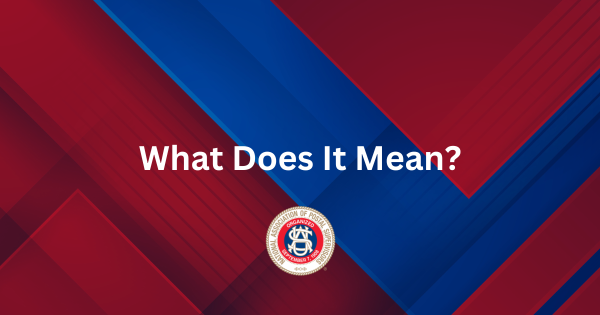What Does It Mean?
What Does It Mean?
By Ivan D. Butts
NAPS National President
Hello, NAPS brothers and sisters. This month, I want to look at some cumulative changes that have recently occurred in USPS policies and procedures, specifically in PUBs 45 and 552.
What does it mean when corporate policy does not align with leadership actions? This refers to a situation where the behavior, decisions and actions of senior leadership are inconsistent with the company’s stated rules, values and strategic objectives. This misalignment can occur in several ways.
The USPS has formal policies that promote certain values or practices (such as ethical behavior, sustainability and transparency), but executives might act in ways that contradict or undermine those principles. For example, the Postal Service has a zero-tolerance policy that often is not inclusive of EAS employees being protected. The MOU cites this policy applies to all employees. However, many groups of EAS employees are subjected to the very bullying and intimidation that was the genesis for creating the policy.
When USPS policies state one thing, but executives act in a different manner, it can lead to perceptions of hypocrisy and double standards. Employees and other stakeholders might feel leadership is not holding all employees to the same standards in the organization, leading to a lack of trust and credibility.
Such misalignment can damage the agency’s reputation, employee morale and stakeholders’ confidence. When executives are seen as not adhering to the policies and procedures they created, it leads to confusion, disengagement and ethical concerns in the agency.
When executives act contrary to policy, it can create confusion or friction in the organization. Employees might become uncertain about which rules they should follow or how seriously they should take corporate policies. Over time, this can lead to a breakdown in organizational culture and internal controls.
In essence, this misalignment undermines the effectiveness of the policies and integrity of leadership. It also can harm the company’s long-term success by eroding trust—internally and externally.
When a corporation removes policies designed to protect employees from psychological aggression, it can have several significant implications, both for employees and the organization. Without policies to prevent psychological aggression (such as bullying, harassment and toxic behavior), employees are more vulnerable to emotional and mental harm. Psychological aggression can lead to stress, anxiety, depression and burnout, potentially affecting an individual’s health and quality of life.
The absence of protective policies can create a toxic work environment where harmful behaviors are more likely to occur. Employees may feel unsupported or unsafe, reducing morale and fostering a culture of fear and distrust.
When employees are not protected from mistreatment, their job satisfaction and sense of loyalty to the company can decrease. This can result in lower levels of motivation, engagement and productivity. Employees who are experiencing psychological aggression may struggle to focus, make decisions or complete tasks efficiently, which can negatively impact the company’s overall performance.
The decision to not equitably apply these protections can damage an agency’s reputation, especially if it becomes known that employees are being mistreated. Any company may be seen as unethical or uncaring, which can impact relationships with customers, partners and potential employees.
Employees who experience or witness psychological aggression may decide to leave the company. High turnover can increase recruitment and training costs and disrupt team dynamics.
Noncompliance with policies may make it harder to attract new talent, as job seekers often look for workplaces with strong cultures of respect and support. Companies viewed as not prioritizing employees’ wellbeing may struggle to hire top talent.
Employees may feel the organization no longer cares about their wellbeing or that leadership is willing to tolerate mistreatment. This can lead to a breakdown in trust between staff and leadership. The lack of psychological protection can lead to a shift in the workplace culture toward one that tolerates or even encourages toxic behaviors, undermining efforts to create a positive, inclusive and supportive environment.
Managers may struggle to address interpersonal conflicts or harmful behavior if no framework or policy is being followed to guide their actions. This can lead to inconsistency in how issues are handled. Noncompliance with policies designed to protect all employees from psychological aggression can significantly harm the wellbeing of employees, damage the company’s culture and reputation and expose the organization to legal, ethical and operational risks.
